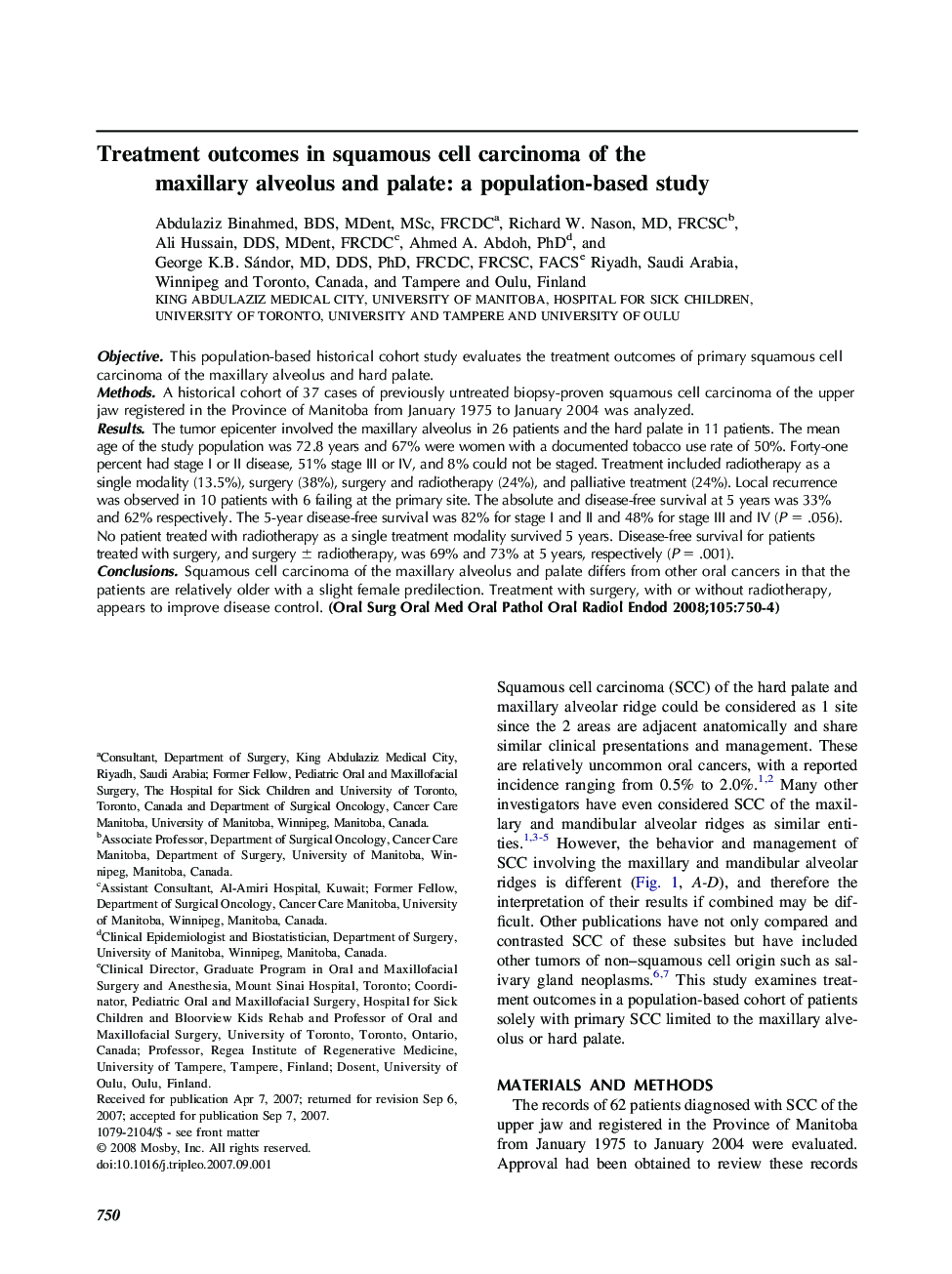| Article ID | Journal | Published Year | Pages | File Type |
|---|---|---|---|---|
| 3168667 | Oral Surgery, Oral Medicine, Oral Pathology, Oral Radiology, and Endodontology | 2008 | 5 Pages |
ObjectiveThis population-based historical cohort study evaluates the treatment outcomes of primary squamous cell carcinoma of the maxillary alveolus and hard palate.MethodsA historical cohort of 37 cases of previously untreated biopsy-proven squamous cell carcinoma of the upper jaw registered in the Province of Manitoba from January 1975 to January 2004 was analyzed.ResultsThe tumor epicenter involved the maxillary alveolus in 26 patients and the hard palate in 11 patients. The mean age of the study population was 72.8 years and 67% were women with a documented tobacco use rate of 50%. Forty-one percent had stage I or II disease, 51% stage III or IV, and 8% could not be staged. Treatment included radiotherapy as a single modality (13.5%), surgery (38%), surgery and radiotherapy (24%), and palliative treatment (24%). Local recurrence was observed in 10 patients with 6 failing at the primary site. The absolute and disease-free survival at 5 years was 33% and 62% respectively. The 5-year disease-free survival was 82% for stage I and II and 48% for stage III and IV (P = .056). No patient treated with radiotherapy as a single treatment modality survived 5 years. Disease-free survival for patients treated with surgery, and surgery ± radiotherapy, was 69% and 73% at 5 years, respectively (P = .001).ConclusionsSquamous cell carcinoma of the maxillary alveolus and palate differs from other oral cancers in that the patients are relatively older with a slight female predilection. Treatment with surgery, with or without radiotherapy, appears to improve disease control.
